
Non-harmonic tones don’t play by the rules. They’re outlaws, slipping through the cracks of the harmony, crashing the orderly party of the chord structure. They exist to disrupt, to stir tension, to turn the smooth flow into something jagged and alive. These are the stray dogs of the musical phrase—dirty, hungry, and essential.
They come in like hitchhikers—passing tones hitching a ride between two proper chord notes, filling the space with their restless motion. Neighbor tones are the drifters, circling back to where they started, leaving a trace of chaos in their wake. Appoggiaturas? They don’t ask permission; they leap in uninvited, all dissonance and drama, before stepping down to something that makes sense, like a con artist giving back your wallet after a good scare.
Suspensions hang there, clutching onto the last chord like they’re afraid to let go, dangling on a thread of tension until they finally give up and step down. Retardations do the opposite—they’re the stubborn ones, climbing upward when everyone expects them to sink. Anticipations? Those are the time travelers, showing up before they’re supposed to, skipping ahead to what’s next like they already know the punchline.
They’re the uninvited guests that make the whole thing worth listening to. Without them, harmony is too polite, too predictable. These tones step out of line, kick up the dust, and remind the music to keep moving, keep fighting, keep feeling.
Neighbor Tones
Neighbor tones (or auxiliary tones) are non-harmonic tones that move stepwise away from a chord tone and then return. They create a sense of motion and embellishment without disrupting the harmony. Neighbor tones can be either upper or lower, depending on the direction they move.
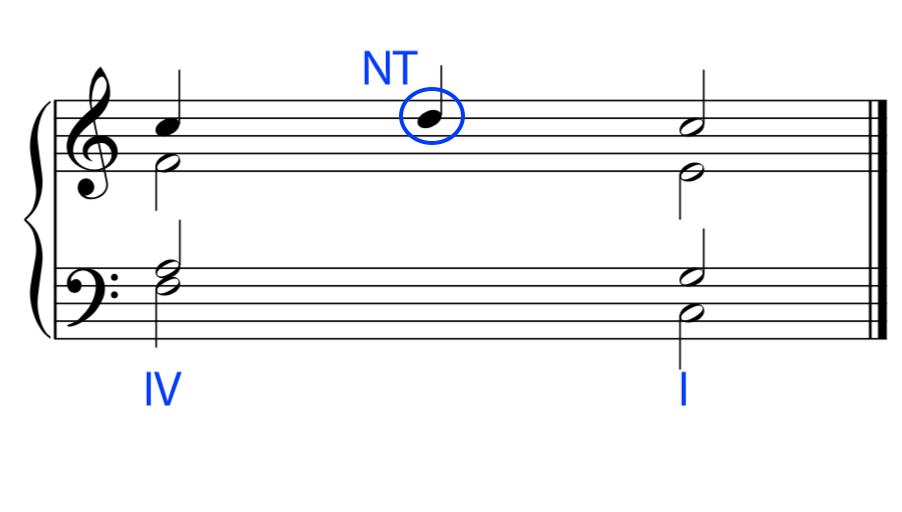
Passing tones are similar, but instead of returning directly to the original chord tone, they connect two consonant tones by stepwise motion, often filling in the space between them. They typically occur between chord tones in a smooth, uninterrupted line, creating a feeling of fluidity in the music.
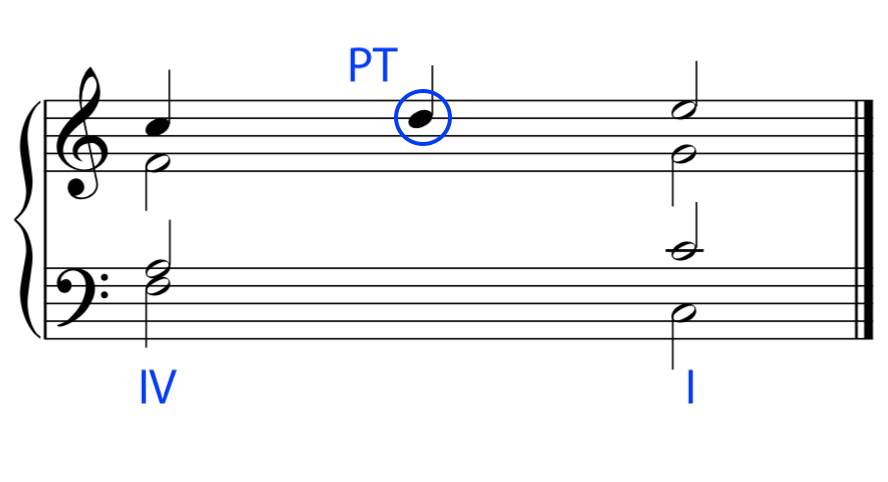
Escape tones
An ESCAPE TONE is a Non-Chord Tone that involves both a step and a leap. From Chord 1, a voice will take one step up at the end of Chord 1 (this note will be a Non-Chord Tone of both Chord 1 and Chord 2), then leap downward to resolve to a chord tone of Chord 2. This seems like a strange sequence but it creates a lot of drama so it can be a desirable method of melodic movement. An example is a C Major chord moving to a G Major chord. The Soprano starts on “E”, moves stepwise up to “F”, and leaps down to “D” for Chord 2.
Escape Tones are always unaccented.
Appoggiatura
Appoggiaturas involve a leap to a non-harmonic tone followed by a resolution by step to a chord tone. These are typically dissonant and serve to heighten the tension before resolving to consonance. They are often used to add drama to a phrase.
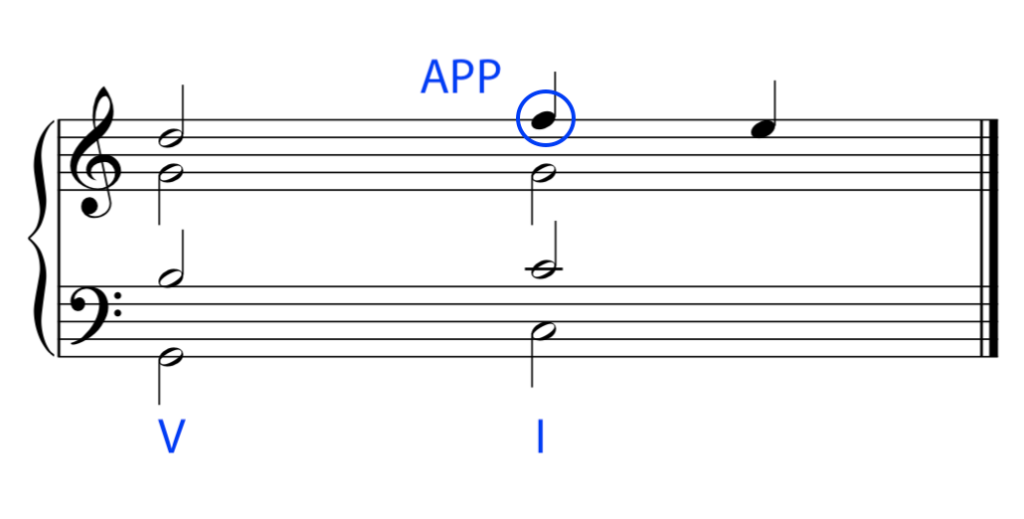
Suspensions are non-harmonic tones that create a dissonance by holding over a note from the previous chord into a new one, then resolving downward by step. They create a lingering tension that feels like an anticipation of the new harmony, and their resolution provides a satisfying release.
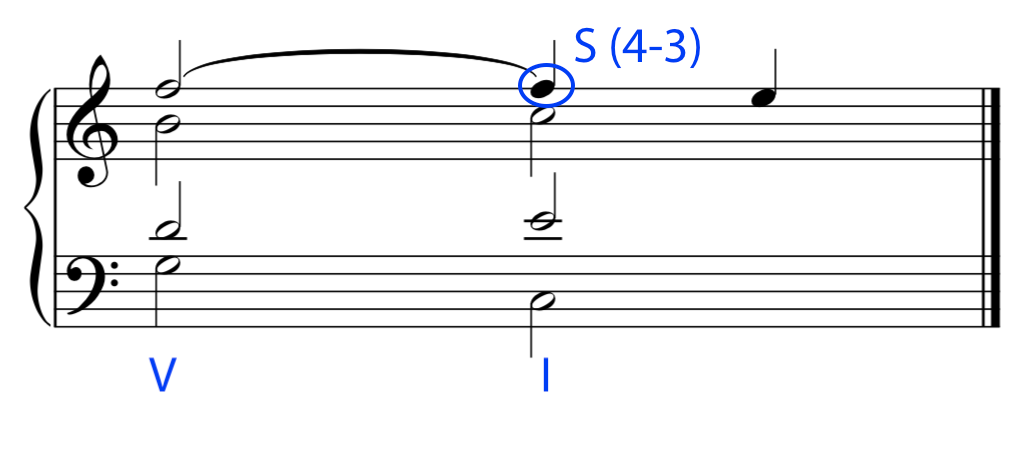
Retardations are similar to suspensions but resolve upward by step instead of downward. They create a similar kind of tension but have a slightly different emotional quality, often providing a sense of delayed resolution.
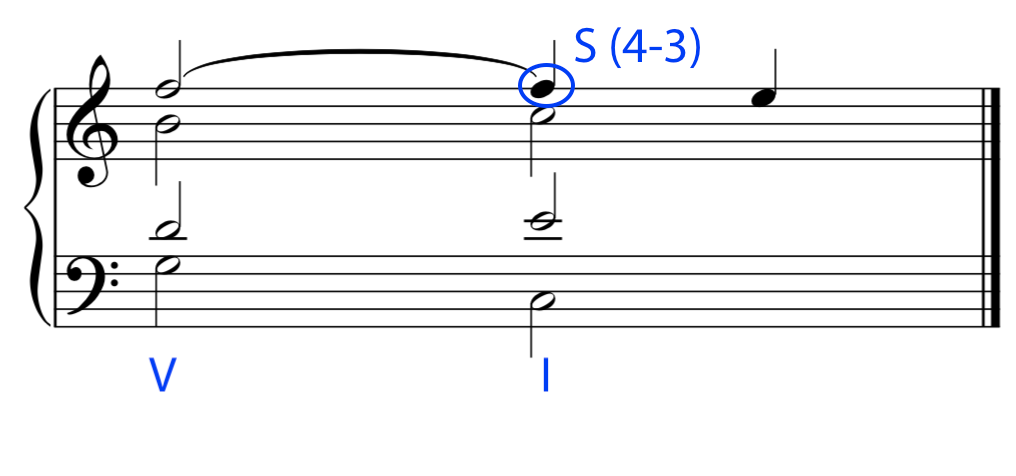
Anticipations involve a note that is played earlier than expected, before the harmony actually changes. This creates a sense of forward motion as the listener anticipates the arrival of the new harmony. Anticipations often blur the line between harmonic and non-harmonic tones, giving the impression that the resolution is already taking place.
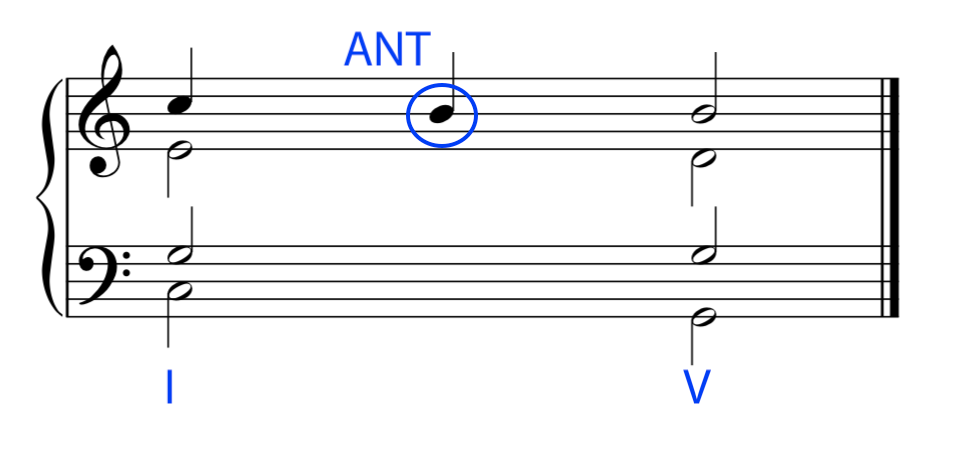
In a broader sense, non-harmonic tones function as tools for shaping musical expression, allowing composers to manipulate tension, create variety, and guide the listener’s emotional journey. By stepping outside of the harmonic structure, they momentarily displace the stability of the harmony, enriching the overall musical landscape before returning to a satisfying resolution.
Passing Tones
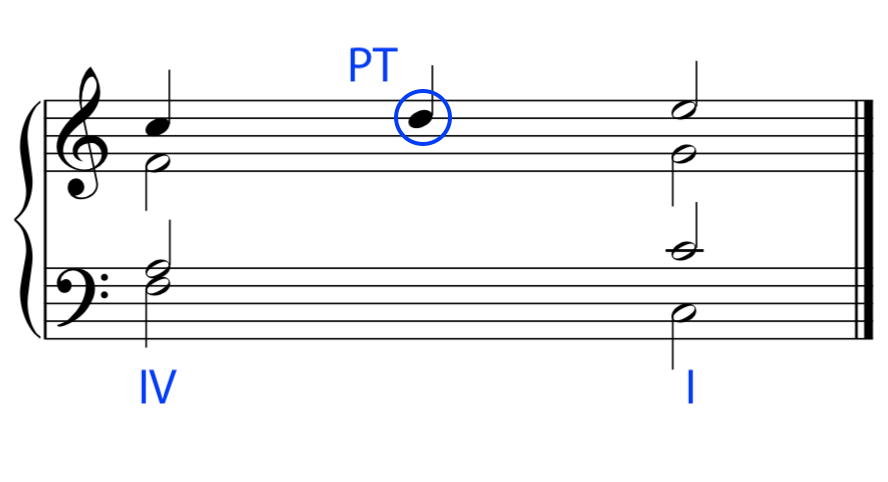
Passing tones embody the essence of transition within any dynamic system, serving as a bridge between stability and instability. They are moments of movement that seem insignificant in isolation but, within the larger structure, become essential to the flow and coherence of the whole. Their presence reflects a universal principle: change is not merely a disruption but a necessary force for connection and transformation.
In communication, passing tones represent the intermediary spaces where meaning shifts and evolves. They are the pauses and transitions that shape how messages are received, altering the tone and texture of interaction. Just as a thought moves from one idea to another, guided by an almost imperceptible thread, passing tones facilitate the movement of a melody, weaving dissonance and resolution into an intricate web of expression.
In improvisation, these tones symbolize freedom and risk, the willingness to step outside the bounds of the expected to explore new possibilities. They create tension, but that tension is temporary, resolved into a larger harmony that feels richer for having flirted with chaos. They remind us that growth often occurs in these fleeting moments of uncertainty, where boundaries are tested and redefined.
Viewed through the lens of systems, passing tones function as transitional elements that maintain balance within a larger framework. They are not the foundation but the connective tissue, allowing different parts of the system to interact seamlessly. Without these transient elements, the structure would stagnate, unable to evolve or adapt to new conditions.
Emergence offers another perspective: passing tones illustrate how complexity arises from simplicity. A single note added between stable pitches can alter the emotional texture of a piece, creating patterns of movement and meaning that could not exist otherwise. They highlight the interplay between the parts and the whole, demonstrating that even the smallest elements can catalyze profound transformations.
Ultimately, passing tones are more than mere adornments; they are agents of change, shaping the experience of a system, a message, or a piece of music. They embody the idea that progress is not linear but fluid, born of tension, transition, and resolution. Their significance lies not in their permanence but in their role as catalysts, reminding us that the most meaningful connections often occur in the spaces between.
Neighbor Tones
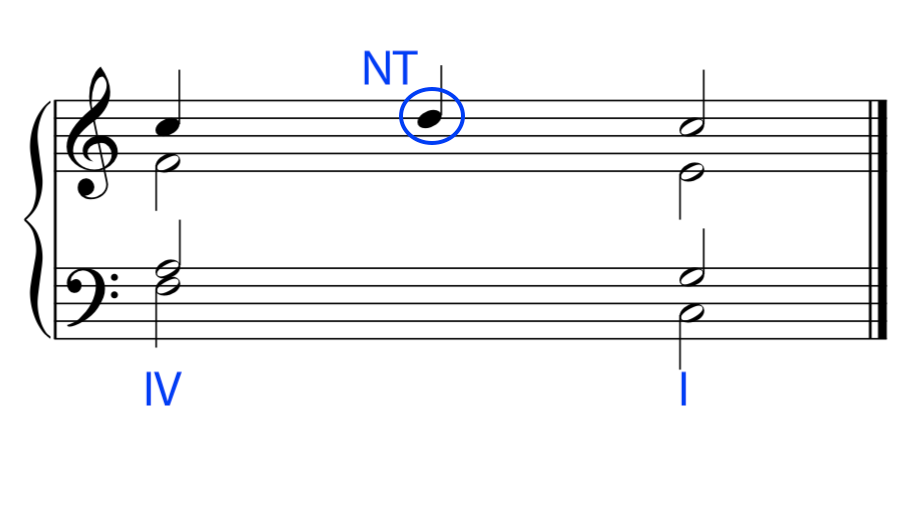
Neighbor tones are moments of close exploration, brief excursions into the immediate surroundings of stability. They step away from a core idea or structure—only to return to it, unchanged but enriched by the temporary deviation. This dynamic reveals a fundamental principle: proximity and contrast deepen our understanding of the familiar.
In communication, neighbor tones act as subtle digressions, adding depth without losing focus. They represent the side-notes, the parentheticals, the asides that enhance meaning by juxtaposing the central message with something adjacent. These small diversions create texture, emphasizing the main point when the system circles back.
In creative expression, they embody intimacy and restraint. The departure is deliberate but modest, exploring possibilities within reach rather than venturing far. By dancing close to home, they highlight the tension between movement and rest, between curiosity and resolution. The return to the original is not a retreat but a moment of affirmation, now seen in sharper relief.
Within systems, neighbor tones illustrate the balance between exploration and stability. They test boundaries without overstepping, allowing the system to flex and adapt while remaining anchored. This localized movement fosters resilience, demonstrating how small oscillations can reinforce, rather than undermine, the whole.
In emergence, neighbor tones demonstrate that transformation doesn’t always require dramatic leaps. Incremental shifts—a brief departure, a quick return—can create subtle but significant changes in perception. They reflect the fractal nature of complex systems, where even the smallest movements echo through the larger structure.
These tones remind us that close, intentional movements are as powerful as bold departures. They show how harmony is enriched through contrast, how brief moments of tension heighten resolution, and how staying near can still reveal new dimensions of the familiar. The neighbor tone, in its modest arc, embodies the delicate balance between connection and individuality, stability and motion.
Escape Tones
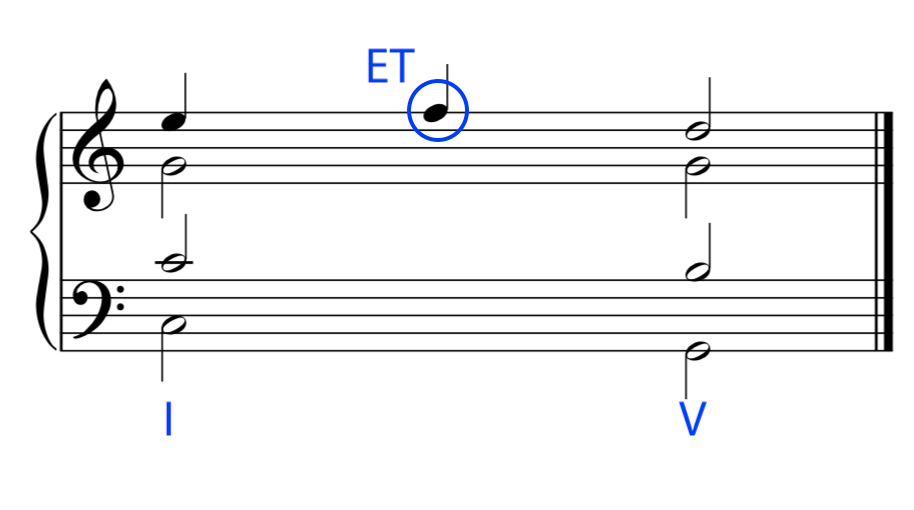
Escape tones can be understood as moments of divergence, where a system briefly departs from its expected trajectory. These are not mere disruptions but intentional deviations that serve a purpose: to explore new possibilities, create contrast, or heighten tension before returning to a sense of stability. They symbolize the necessity of stepping outside the framework to discover what lies beyond.
In a communicative context, they represent the unpredictable detours that redefine the meaning of a message. When a pattern breaks unexpectedly, it catches the attention, forcing an audience to reassess the flow of information. This deviation reframes the entire context, creating a sharper focus on the moment of return or resolution. Escape tones highlight the dynamic nature of interaction, where divergence enriches the larger narrative.
In improvisation, these tones embody a deliberate act of stepping away from the familiar. They create a sense of tension, not as an accident but as an exploration of what exists outside the core structure. The temporary departure invites the unexpected, drawing both performer and listener into a heightened awareness of the journey back to coherence. It is in this interplay between leaving and returning that creativity flourishes.
Within a system, such moments of divergence illustrate the importance of flexibility and experimentation. A stable system does not function in isolation; it must allow for deviations that challenge its norms, testing its capacity for adaptation. The escape tone, though fleeting, is a mechanism through which systems learn, grow, and evolve, finding equilibrium only after the tension has been resolved.
As an emergent phenomenon, the escape tone underscores how complexity arises from temporary chaos. A deliberate departure introduces contrast, creating a richer texture within the whole. These moments of instability, while brief, ripple through the system, altering perceptions and interactions. They reveal that the act of stepping away is not a failure but an integral part of the creative process, opening new pathways that would otherwise remain hidden.
Escape tones remind us that deviation is a form of exploration, a necessary part of growth and innovation. They show that stability is not static but dynamic, requiring occasional departures to maintain vitality. Whether in communication, art, or systems, these moments of escape are not just divergences—they are opportunities to transform the ordinary into something extraordinary, redefining the boundaries of what is possible.
Free Neighbor Tone

A free neighbor tone is a moment of unbound movement—an exploration that leaves the security of a core structure and returns to it, but not through a strictly adjacent path. Unlike the conventional neighbor tone, its departure and return traverse unexpected terrain, creating an air of spontaneity and freedom. It is a gesture of independence, existing within a system but not entirely constrained by its immediate rules.
In the realm of communication, the free neighbor tone is a thought that momentarily escapes the flow of a conversation, detouring into more abstract or tangential territory. Its value lies in the unpredictability of its path; while it returns to the original point, its journey reshapes the listener’s understanding, adding layers of meaning that might not have been accessible through direct progression.
In creative improvisation, it represents a willingness to test the boundaries of structure. The free neighbor tone is not tethered to the immediate surroundings; it ventures farther, creating a tension that lingers until resolution. This tension isn’t about disruption but about the contrast between freedom and inevitability, allowing the return to stability to feel richer and more earned.
In systemic terms, it illustrates the interplay between flexibility and order. The free neighbor tone serves as an outlier, testing the system’s capacity to integrate something unexpected without losing coherence. It is the momentary introduction of external energy that, rather than destabilizing the system, enhances its adaptability and depth.
From the perspective of emergence, the free neighbor tone highlights the unpredictable pathways through which complexity arises. By temporarily departing from a linear or adjacent trajectory, it reveals hidden relationships within the system, creating moments of surprise and discovery that enrich the whole. Its movement emphasizes that even apparent detours can contribute to the evolution of a pattern.
Ultimately, the free neighbor tone reflects a balance between exploration and connection. It demonstrates that freedom within boundaries—while momentarily destabilizing—can lead to greater creativity and resonance. Its arc, defined by departure and return, reminds us that the interplay between the familiar and the unexpected is where the most compelling stories are told.
Appoggiatura
The appoggiatura is a bold gesture of tension and resolution, a momentary insistence on instability before yielding to balance. It is a dissonant arrival—a deliberate interruption—that seeks to momentarily dominate the harmonic space before gracefully stepping aside. Its drama lies in its transient nature, offering both contrast and catharsis within a larger structure.
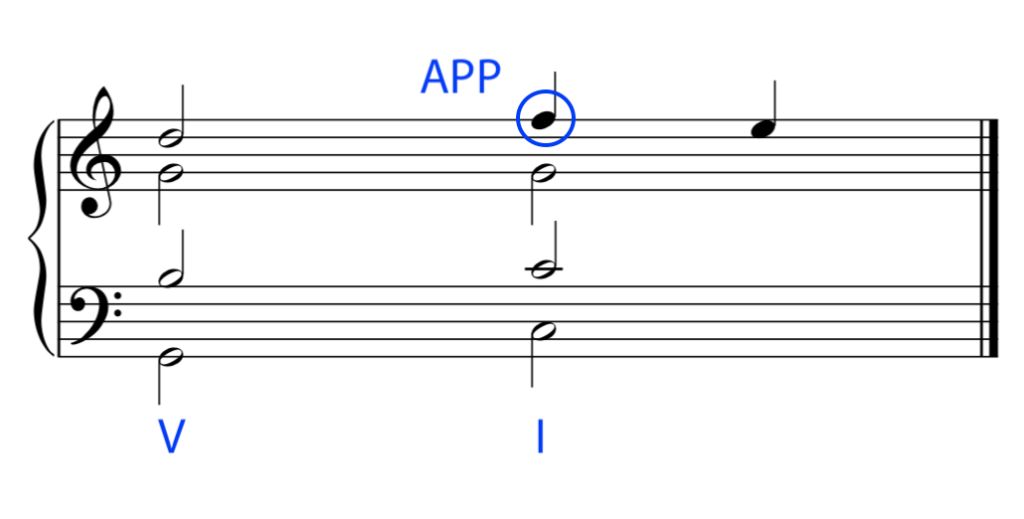
In communication, an appoggiatura represents the forceful entry of an idea that initially seems out of place or disruptive. It draws attention precisely because it doesn’t immediately fit, demanding engagement before it resolves into a natural flow. This dynamic reflects the way tension can sharpen focus, making the eventual resolution feel more significant and meaningful.
In creativity, it captures the spirit of risk and emotional immediacy. The appoggiatura doesn’t shy away from its dissonance; it embraces it as an essential part of its arc. By leaning into tension, it creates a sense of yearning or intensity that heightens the resolution. It is the essence of storytelling, where conflict enriches the ultimate harmony.
From a systemic perspective, the appoggiatura exemplifies the principle of necessary disturbance. It momentarily destabilizes a structure, challenging its balance in order to reinforce it. This brief disruption is not a failure but a crucial component of dynamic equilibrium, reminding us that harmony often emerges through the interplay of opposites.
In emergence, the appoggiatura illustrates how contrast drives evolution. Its dissonance is not an error but a feature—an event that introduces depth and movement within the system. By resolving into stability, it underscores how tension and release are interwoven in the creation of complexity and beauty.
The appoggiatura, then, is a metaphor for the cycles of disruption and resolution that define creative and systemic processes. Its insistence on being heard, followed by its willingness to dissolve into harmony, reflects the power of fleeting moments to reshape perception. It teaches us that tension is not an end in itself but a bridge to something greater—a resolution made richer by the journey through instability.
Suspension
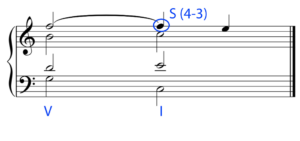
Suspension is the art of holding onto tension, prolonging a moment of unresolved energy before finally releasing it. It captures the essence of anticipation, drawing attention to the gap between what is and what is yet to come. Unlike a fleeting dissonance, suspension lingers, demanding patience and focus, turning time into a dynamic, expressive force.
In communication, suspension represents the deliberate pause, a hesitation that holds attention in suspense. It is the unfinished sentence, the momentary silence before an answer, or the lingering note of uncertainty that sharpens awareness. By prolonging the unresolved, it amplifies the impact of what follows, transforming resolution into a deeply satisfying moment.
In creative expression, suspension embodies restraint and drama. It challenges the listener or observer to dwell in discomfort, to feel the pull of the unresolved. By delaying resolution, it creates space for reflection, heightening the emotional weight of both tension and its eventual release. It is the heartbeat of suspense, the moment where time seems to stretch infinitely before the inevitable arrival.
Within systems, suspension demonstrates the value of holding a state of imbalance. It resists immediate resolution, allowing energy to accumulate and flow into new forms. This tension, far from destabilizing, can catalyze deeper integration and understanding, showing that stability often requires a period of unresolved potential.
In emergence, suspension reveals the richness of delay. By extending the moment before change, it creates opportunities for complexity to unfold. It is in the prolonged tension that connections deepen and unexpected patterns arise, emphasizing that growth is often found not in resolution but in the process of getting there.
Suspension teaches us the power of lingering. It reminds us that tension, far from being something to avoid, is an integral part of any journey. By holding onto the unresolved, it allows time to breathe, to stretch, and to transform anticipation into a profound sense of fulfillment. It is a testament to the beauty of patience and the depth of moments that resist easy conclusions.
Retardation
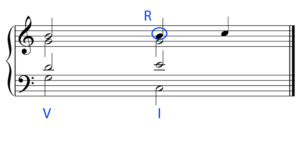
Retardation is the art of delay, a deliberate holding back that postpones resolution, creating a sense of yearning and heightened expectation. Unlike suspension, which lingers in a stable dissonance, retardation is an active slowing down, stretching the tension just a little further before finally arriving at closure. It embodies resistance, drawing focus to the power of time and the inevitability of release.
In communication, retardation mirrors the strategic pause—a rhetorical device where resolution is withheld to build intensity or emotional impact. It reflects the human experience of waiting, where the delay itself becomes a crucial part of the narrative, shaping how the eventual resolution is received. The postponement is not an obstacle but a tool for deepening engagement.
In creativity, retardation is the tension of the drawn-out phrase, the lingering moment that teases the listener with the promise of resolution. It creates a dramatic arc, where the delay enriches the emotional payoff. The moment of resolution feels earned, amplified by the extended journey through dissonance.
From a systemic perspective, retardation represents the deliberate pacing of change. It slows the system’s progress, allowing tensions to build and accumulate before releasing them into a new equilibrium. This deliberate delay ensures that transitions are meaningful, emphasizing the importance of timing in the process of transformation.
In the context of emergence, retardation exemplifies how complexity grows from the interplay of delay and resolution. The extended moment before resolution allows for the development of unexpected patterns and relationships, revealing that delay can be a fertile ground for creativity and innovation. It highlights that progress is not always immediate but often requires the patience of gradual unfolding.
Retardation shows the value of resisting immediacy. It turns delay into a feature rather than a flaw, using time as an expressive tool to heighten contrast, deepen tension, and ultimately transform resolution into something far greater than the sum of its parts. It reminds us that in music, systems, and life, what we wait for is often most meaningful when the waiting itself has shaped the experience.
Anticipation
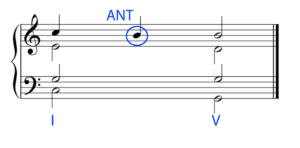
Anticipation is the art of moving ahead, a bold gesture that arrives at resolution before the rest of the system is ready. It embodies foresight and impatience, disrupting the flow by momentarily shifting time forward. This preemptive resolution creates tension in its own way, as the surrounding structure catches up, emphasizing the inevitability of connection between the present and the future.
In communication, anticipation mirrors the act of finishing another’s thought, stepping ahead of the narrative to suggest what comes next. It creates a dynamic interplay between expectation and fulfillment, forcing attention toward what is about to unfold. This forward motion transforms the resolution into something both surprising and inevitable, blending spontaneity with clarity.
In creativity, anticipation is a risk—a step into the future that momentarily unbalances the whole. By resolving prematurely, it invites tension into the system, challenging the surrounding elements to align with the unexpected resolution. This dynamic tension adds depth, infusing the structure with energy and movement.
In systemic terms, anticipation demonstrates the role of preemptive action in maintaining balance. By introducing resolution before its expected time, it reveals the system’s flexibility, showing how it can adapt to disruptions. This proactive energy is not chaotic but a sign of resilience, as the system realigns itself around the anticipated outcome.
In emergence, anticipation reflects the non-linear nature of development. It captures how systems often move ahead of themselves, creating moments of resolution that ripple backward and forward, reshaping the whole. These moments highlight the interconnectedness of time and change, showing that the future often asserts itself before the present has fully settled.
Anticipation teaches that stepping ahead can be as powerful as staying in time. It shows how preemptive movement introduces a creative tension, allowing the journey to resolution to feel both organic and charged with potential. It reminds us that the pull of the future is not a disruption but an essential force in the dynamic interplay of tension, release, and transformation.